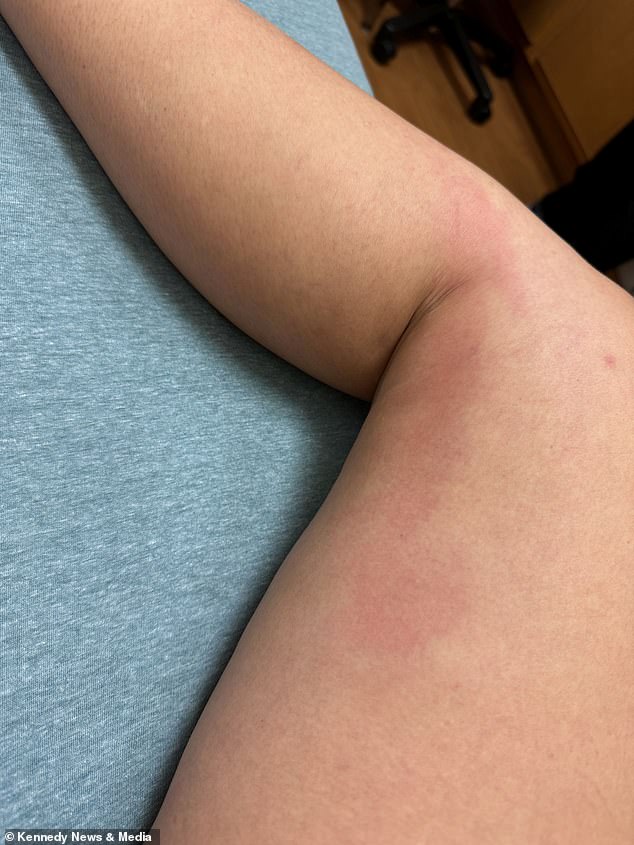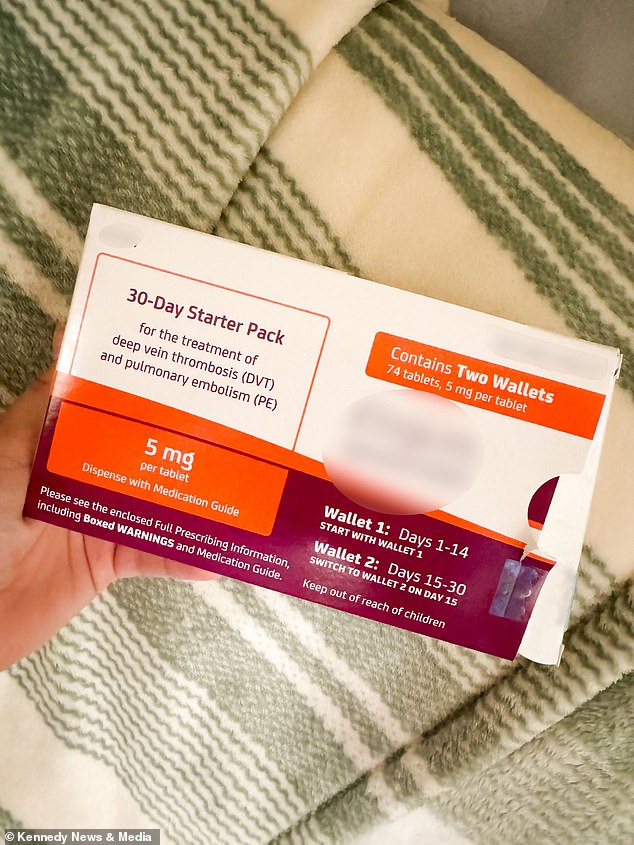Mom reveals how subtle red spot was actually a sign she had a silent medical emergency
A young mother said a “red spot” on her right leg was a warning sign that she had a serious blood clot.
Hanah Thornton, a 23-year-old mother of one from Willow Springs, Missouri, started feeling pain in her leg this weekend, but she thought it was from her workout.
By Tuesday, however, it was so bad that she could barely walk. In addition, a “hot” red spot had developed that ran from her groin to the back of her knee. She had to go straight to the emergency room.
Scans showed she had deep vein thrombosis, or DVT, a condition in which a blood clot forms. Doctors said it was just 0.4 inches away from entering a major vein that could have traveled to the lungs, where it could have blocked a major artery and been fatal.
Mrs Thornton was taking blood thinners to dissolve the clot and will have to continue taking them four times a day for the next three months to ensure it does not return.
Hanah Thornton, 23, was rushed to hospital after struggling to walk. Doctors revealed she had a blood clot in her leg

The image above shows the red swelling in her leg caused by the blood clot in her vein
She says doctors told her it was due to the birth control pill, which contains the female sex hormones progesterone and estrogen.
This pill can increase the levels of clotting factors in the blood and thus the risk of a blood clot, doctors say. About one in 1,000 users of the pill suffers from the complication each year.
Mrs Thornton described the spot as follows: ‘Last weekend I noticed my leg was becoming more and more sensitive.
‘I’m a pretty active person and I walk a lot and go to the gym. I thought it was just muscle pain so I didn’t think too much of it.
‘Then I started thinking that I hadn’t been going to the gym or walking on the weekend to make it sensitive.’
She added: ‘Later that day I got home and a red spot had started growing on my leg. It was very warm to the touch and very sensitive, to the point where I could barely walk on it. It was my right leg.
“It was about two inches long and it went from below my knee all the way down to my thigh. I would say it was at least 23 inches and it went through the entire vein.”
The dental assistant tells her story to warn others about the possible dangers of using contraceptives.

She said doctors told her the clot was caused by her combination contraceptive (pictured), which can increase clotting factors in the blood and increase the risk of clots.
She added online: ‘I never thought this would happen to me but now we are 23 and have to take blood thinners. Be aware of the contraception you are taking and educate yourself!’
When she first went to the doctor on the second Monday of this month, she was told she had cellulitis and was discharged.
But when the pain got worse, she went to another hospital, where scans were done before the blood clot was discovered.
Ms Thornton first started using contraception three years ago, after becoming a mother and giving birth to her daughter Henslee in September 2021.
Initially she was prescribed the mini contraceptive pill, but when it started causing her to have irregular periods, she switched to the combination pill, sold under the brand name Eliquis, a year ago.
Initially, the dental assistant said that she had no problems with the new pill and that it was a good preventative method to prevent her from becoming pregnant again.
About 900,000 Americans are affected by DVT each year. Most of these people are over 60 and have another underlying condition, such as heart disease.
Warning signs include swelling in the legs or arms, pain or tenderness in the area, and red or discolored skin.
Doctors say veins close to the surface may also be larger than normal.
In addition to blood thinners, patients may also be asked to wear compression stockings to reduce or even eliminate swelling in the legs.
Doctors warn that some patients may suffer from swollen legs for the rest of their lives, as the blockage can damage the veins in the area.
